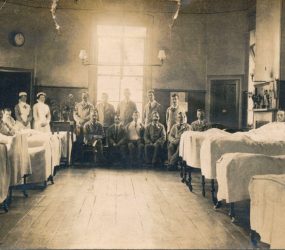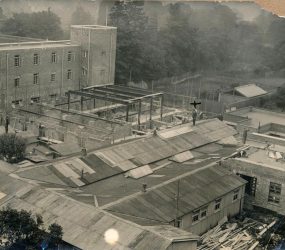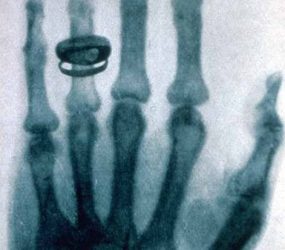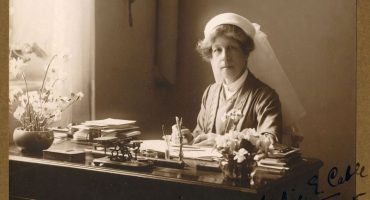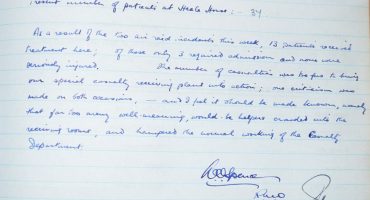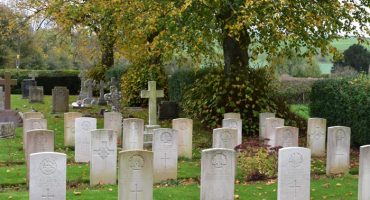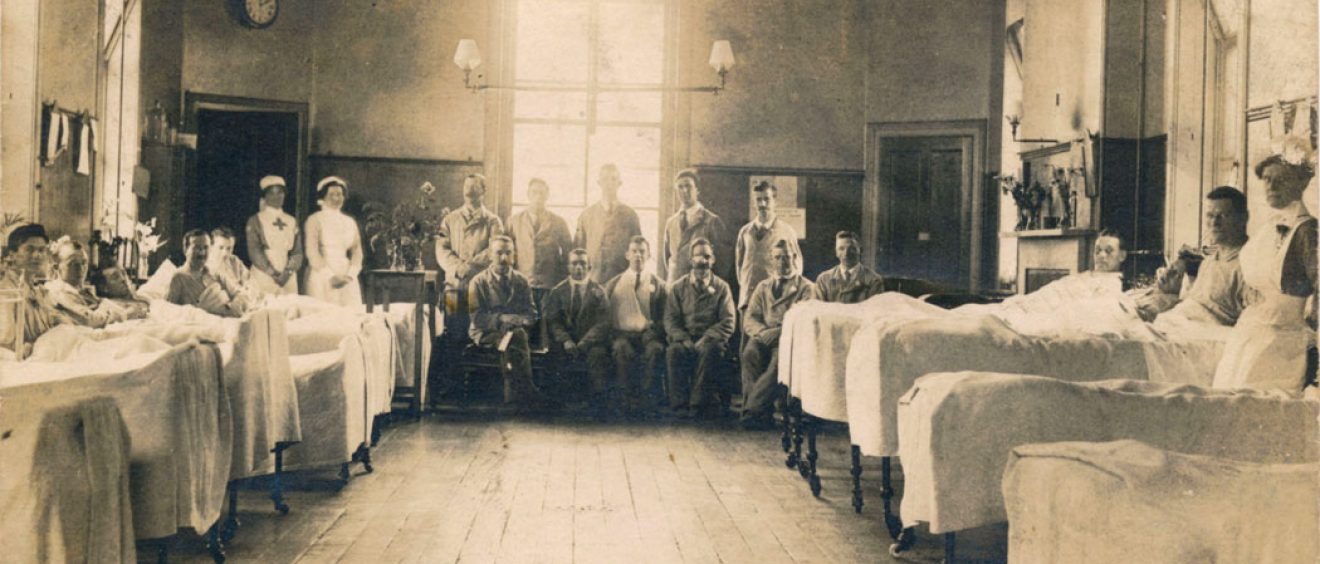
Salisbury Infirmary during the Great War
During World War 1, Salisbury Infirmary underwent huge changes and was under great financial strain. This was due to an increase in the number of patients treated, along with a decrease in trained medical staff who were posted overseas to military hospitals. At this time hospitals were funded by charitable trusts and donations and by the end of 1914 the hospital debt had increased to £4,919 (equivalent of around £500,000 in today’s money) and the governors authorised the sale of stock to reduce the overdraft.
Soldiers start arriving
After the declaration of war in August 1914, Ald. Hammick, Chairman of Salisbury Infirmary, made an offer to take in fifty sick or wounded soldiers. Feversham Ward, which had been empty for a few years, was equipped by the local Red Cross Society to receive 20 military cases. The Outpatients waiting room was fitted with a further 20 beds and named ‘The Roberts Ward’. The photographic postcard of Feversham Ward held in our collection (image below) was taken in April 1913. The image shows the first floor ward in the west wing of the Infirmary, latterly used as a staff dining room.
Following Hammick’s offer, the first convoy of 50 wounded men from France arrived in October 1914. A few weeks later the committee agreed to also receive sick soldiers from camps near Salisbury. After this as many as 80 military cases were being treated alongside the civilian inpatients (averaging 109) making the total of 190 beds occupied. This imposed a strain on the medical staff, with no fewer than 940 major operations carried out during the year ending June 1915.
As well as the increased workload, soon after the outbreak of war, notice was received that nurses promised by the Infirmary to help the military were needed. Three sisters and one senior nurse were released to the army immediately. Others followed and a few months later 4 were with troops in France, 2 in Egypt and 4 in Territorial hospitals.
In this emergency, assistance was given by the local branch of the Red Cross Society. The women’s Voluntary Aid Detachment having 15 members serving on the wards and the men’s Voluntary Aid Detachment provided orderlies, stretcher bearers and ambulance service to and from the railway station. The whole of the clerical work dealing with military cases was carried out by voluntary staff of the Red Cross Society, which also supplied clothing to military patients.
The picture of the hospital (below) viewed from the roof of Radnor Ward in 1936, shows the collection of temporary buildings that came into existence across the back gardens of the Infirmary. These buildings were initially used as isolation wards for smallpox patients and latterly as a temporary outpatients department. During World War 1, several were used for convalescing soldiers.
Patient numbers during the war years
The chart below shows the increase in average numbers of inpatients over the war years whilst outpatient figures dropped dramatically. Interestingly you can also see the increased numbers of patients having X-rays, a pioneering new diagnostic tool only being developed for medical purposes in early 1900s.
| Financial Year ending | 1912 | 1913 | 1914 | 1915 | 1916 | 1917 | 1918 | 1919 |
|---|---|---|---|---|---|---|---|---|
| Inpatient average daily | n/a | 94 | 95 | 109 | 126 | n/a | 169 | 160 |
| Outpatients | 1149 | 1819 | 1890 | 1559 | 1013 | n/a | 644 | 550 |
| Casualty | 2630 | 3056 | 2043 | 3268 | 2840 | 2626 | 3728 | 4683 |
| Dental | 503 | 621 | 579 | 428 | 347 | n/a | n/a | n/a |
| Ophthalmic | 341 | 452 | 384 | 72 | n/a | n/a | n/a | |
| X-ray | 248 | 352 | 432 | 416 | 662 | 943 | 1073 |
Advances in medical diagnosis
In 1895 the discovery of the x-ray was an important milestone in the history of medicine. Wilhelm Röentgen, Professor of Physics in Bavaria, revealed the possibility of using electromagnetic radiation to create what we now know as the x-ray. By 1896 one of the first radiology departments in the world was set up at Glasgow Royal Infirmary. In the first twenty years following Röentgen’s discovery, x-rays were used to treat soldiers fighting in World War 1, finding bone fractures and imbedded bullets. The first x-ray of Röentgen’s wife’s hand is pictured below.
Infection diseases and Commonwealth soldiers
Early in January 1915, flooding affected the ground floors of Salisbury Infirmary causing not only expense, but horrible conditions in the hospital. Several cases of cerebro-meningitis were admitted and isolated before removal to the Old Sarum Isolation hospital. Outbreaks of infectious diseases also affected World War 1 soldiers camped out on Salisbury Plain. Records from the Isolation Hospital at Old Sarum show many admissions during this time. You can read about this in Infections, isolation Commonwealth soldiers.
Soldiers from oversees were also treated at Harnham Hospital and can be identified in this group photograph in 1918.

